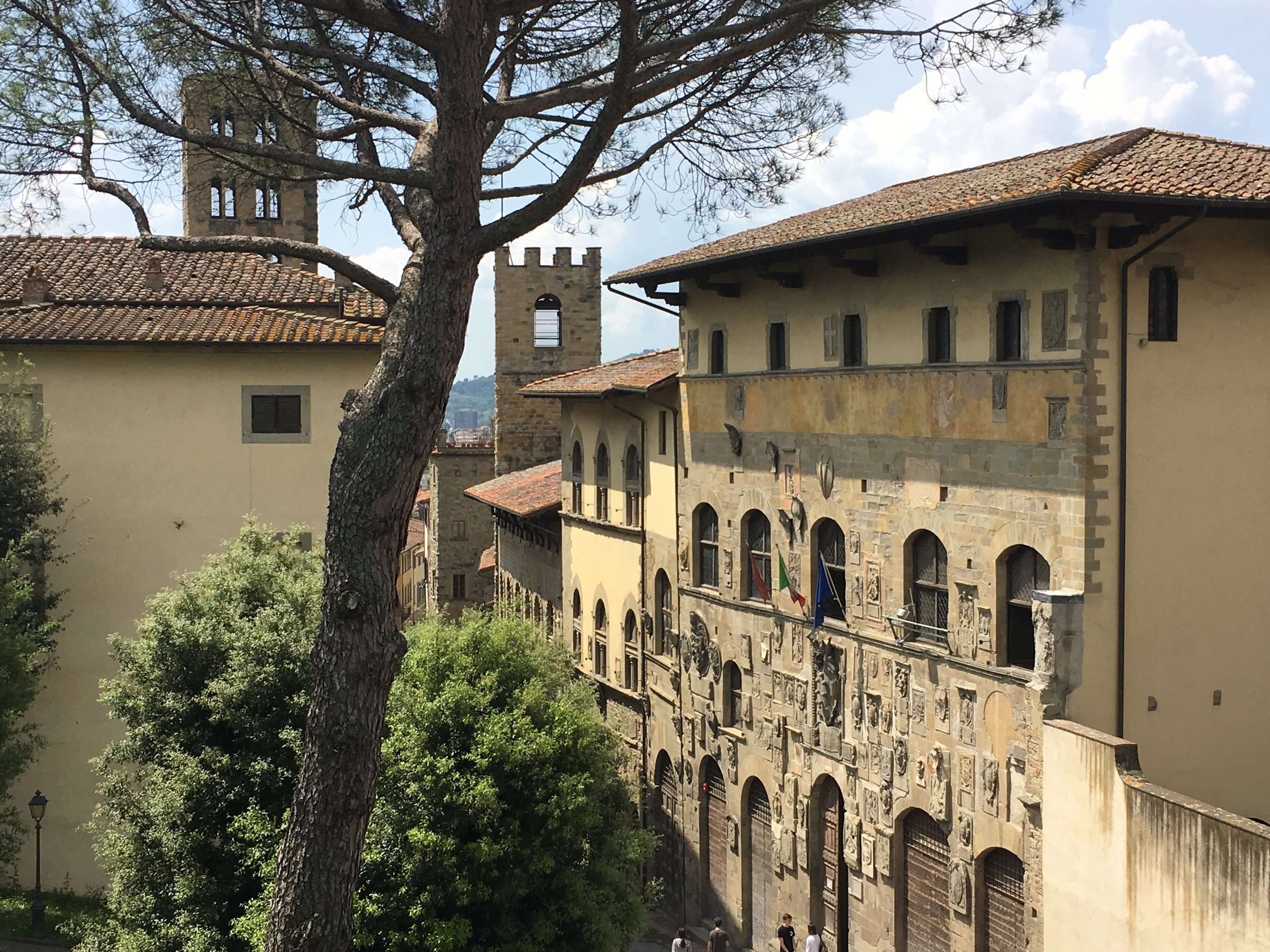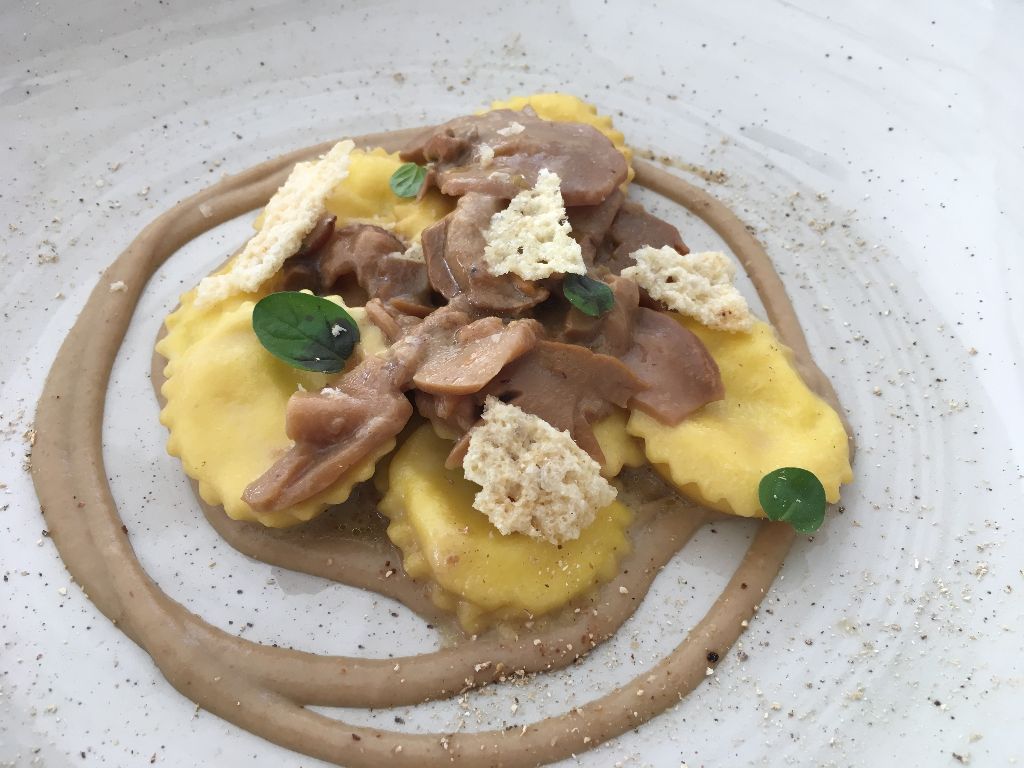La Fortezza (The Fortress)
In Medieval times, long before it became a nation, Italy was made up of independent city-states and kingdoms that were often at war with each other. In Tuscany, the cities of Florence, Pisa, and Lucca engaged in ongoing battles for control of the region. Traces of this historic rivalry still exist - for example, in Lucca's annual celebration of its liberation from Pisa (shown in photos below), an event that occurred in the mid-1300s. And don't even mention the intercity soccer rivalries!
During the 14th century the armies of Lucca, needing a strategic vantage point on higher ground, constructed a fortezza (fortress) on the Cerruglio hill in the countryside between Lucca and Valdinievole. This fortress, with its strategic position and high tower, allowed the Lucchese to have advance warning of an enemy approaching from the direction of Florence and also to send signals back to Lucca. In the 15th century, the Florentines (then in control of the region) expanded the fortress to its current size and configuration.
The fortezza with original construction on the left and more recent addition to the right of the two central towers (note the change in materials from stone to brick).
Original 14th century "door within a door"
Today, the fortezza remains an imposing structure, sitting above the small town of Montecarlo, about a 30-minute drive from Lucca. The original portion of the fortress, built in the 14th century, includes a rounded tower (the mastio, far left in the aerial photo above), two square towers, and a central courtyard all connected by exterior walls in a roughly triangular shape.
The entrance, in one of the square towers, is through an ancient wooden door with a "door within a door" design that prevented armed intruders from entering (the smaller door could be opened but was too small to permit the weapons carried by a soldier to pass through). Amazingly, this massive door is original to the fortress.
The current family home, once the quarters of the military person in charge of the fortress, also lies in this section, as does a large outdoor kitchen and an old cistern. In the central courtyard wall another door leads out of the fortress and onto beautiful views of the valley below.
The more recent construction (15th century) is in brick rather than stone and includes a long room with beamed ceilings and a fireplace at what is now the front of the property, and two smaller towers. Its walls enclose a formal Italian garden, which lies between the newer and older portions of the fortezza.
The Italian garden lies between the oldest and newer portions of the fortezza .
Eventually, the wars between the city-states ended and the fortezza was sold to a private owner. Today it remains a private property, in the family of the current owner since 1905. Imagine having a Medieval fortress as your family home! What must it be like to live day-to-day amid such history? Luckily it is possible to experience the fortezza as the current owners, who are dedicated to restoration and upkeep of this unique piece of history, occasionally open it to the public for tours and private events. Even better, I recently had the chance to tour the property with a small group of students and teachers from Lucca Italian School. One of the current owners, Signor Valter Menchini, was a delightful tour guide and shared his vast knowledge of the fortezza’s construction and history. He so clearly loves his home, and this region’s history, that he made it all come alive with his descriptions of events in the fortress and his interesting anecdotes, such as the story of the two elderly sisters who once lived here and for whom the Torre delle Gobbine (Tower of the Hunchbacks) is named.
Looking out from the entry to the Torre delle Gobbine toward one of the towers in the oldest part of the fortezza.
Hearing that story, as we stood at the top of the tower, overlooking the valley below, was awe inspiring. We also climbed up into the mastio and the second tower at the front of the fortezza, which was accessed by a narrow, winding stone staircase and opened onto views of the town, the valley beyond, and several distant towns. Signor Menchini suggested that this might be the perfect spot for an aperitivo. What a good idea - if I lived here I would spend every summer evening doing just that.
The village of Montecarlo viewed from a window in the fortezza.
The town of Montecarlo, which sits just below the fortezza, is small and very charming. Sections of the old city walls remain and there are shops, restaurants, and wine bars to enjoy in addition to wonderful views. Montecarlo is a stop on the Strada del Vino delle Colline Lucchesi e di Montecarlo (the Wine Road of the Lucchese Hills and Montecarlo). Surrounded by vineyards, Montecarlo is known for its very nice white and red wines, which are often served in the restaurants of the surrounding towns, including Lucca. When in doubt as to what wine to order, I always ask for "un bicchiere di vino bianco di Montecarlo" (a glass of Montecarlo white) and I'm never disappointed.
When I'm in Italy, I often declare "what a perfect day". My visit to the fortezza certainly qualified for that description. Grazie to Lucca Italian School for arranging this visit and to the Pardocchi - Menchini family for opening their family property to us ! - post by JMB
Our host and tour guide, Signor Menchini (front left) and my group from Lucca Italian School.




















































